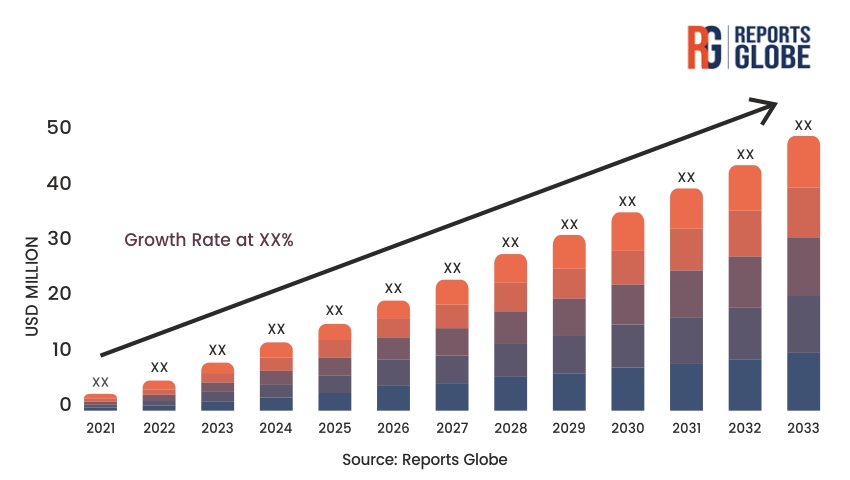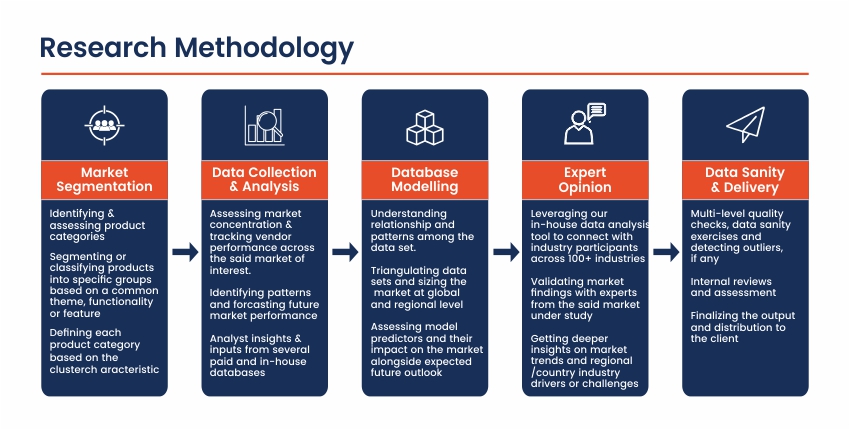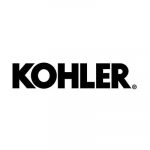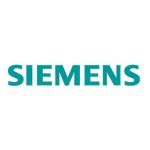Market Overview
The North America Electric Power Steering (EPS) Sensor Market has been experiencing significant growth in recent years, primarily driven by the increasing adoption of advanced driver assistance systems (ADAS) and the growing demand for fuel-efficient and safe vehicles. EPS sensors play a crucial role in the functioning of electric power steering systems, which have largely replaced traditional hydraulic power steering systems in modern vehicles. These sensors detect the torque and position of the steering wheel, enabling the EPS system to provide precise and responsive steering assistance to the driver.
The market is highly competitive, with several major players operating in the region, including Bosch, Continental, DENSO, Infineon Technologies, and Nexteer Automotive. These companies are actively investing in research and development to introduce advanced EPS sensor technologies that offer improved performance, reliability, and cost-effectiveness.
The North America EPS Sensor Market is segmented based on sensor type, vehicle type, distribution channel, and country. In terms of sensor type, the market is categorized into steering wheel position sensors, steering column torque sensors, and others. Based on vehicle type, the market is divided into passenger cars, light commercial vehicles, and heavy commercial vehicles. The distribution channel segment includes OEMs and aftermarket. Geographically, the market is analyzed across the United States, Canada, and Mexico.

Key Takeaways of the Market
- The North America EPS Sensor Market is expected to witness a CAGR of 7.2% during the forecast period (2021-2028).
- The increasing adoption of advanced driver assistance systems (ADAS) is a major driver for the growth of the EPS sensor market.
- The passenger car segment holds the largest market share, owing to the high volume of passenger cars produced and sold in the region.
- The OEM segment dominates the distribution channel, as EPS sensors are primarily installed during the vehicle manufacturing process.
- The United States is the largest market for EPS sensors in North America, followed by Canada and Mexico.
Market Driver
The primary driver for the growth of the North America EPS Sensor Market is the increasing adoption of advanced driver assistance systems (ADAS) in vehicles. ADAS features, such as lane-keeping assist, adaptive cruise control, and park assist, rely on the accurate and reliable functioning of EPS sensors to provide steering assistance and maintain vehicle stability. The growing consumer demand for vehicles equipped with ADAS features, coupled with stringent government regulations on vehicle safety, is compelling automakers to integrate EPS sensors in their vehicles.
Moreover, the rising focus on fuel efficiency and emissions reduction is further driving the adoption of EPS systems, as they consume less power compared to traditional hydraulic power steering systems. This, in turn, is boosting the demand for EPS sensors, which are integral components of EPS systems.
Market Restraint
One of the key restraints for the North America EPS Sensor Market is the high cost of EPS systems compared to traditional hydraulic power steering systems. The complex electronics and software required for EPS systems contribute to their higher cost, which can limit their adoption in lower-priced vehicle segments. Additionally, the need for specialized skills and equipment for the maintenance and repair of EPS systems can also increase the overall cost of ownership for vehicle owners.
Another potential restraint is the risk of electronic failures and malfunctions in EPS systems, which can compromise vehicle safety and lead to costly recalls. EPS sensors are critical components of these systems, and any issues with their performance or reliability can have serious consequences. Manufacturers need to ensure the highest standards of quality and durability in their EPS sensor products to mitigate these risks.
Market Opportunity
The increasing trend towards autonomous and semi-autonomous vehicles presents a significant opportunity for the growth of the North America EPS Sensor Market. As vehicles become more automated, they will require advanced steering systems that can accurately detect and respond to driver inputs, road conditions, and other variables. EPS sensors will play a crucial role in enabling these systems to function effectively and safely.
Another opportunity lies in the development of more compact, lightweight, and cost-effective EPS sensor technologies. As automakers face increasing pressure to reduce vehicle weight and improve fuel efficiency, there is a growing demand for EPS sensors that can offer the same or better performance while occupying less space and weighing less. Manufacturers who can innovate in this area and offer competitive pricing will be well-positioned to capture market share.
Market Segment Analysis
Passenger Cars
The passenger car segment holds the largest share of the North America EPS Sensor Market, accounting for over 80% of the total market revenue. This can be attributed to the high volume of passenger cars produced and sold in the region, as well as the increasing adoption of EPS systems in these vehicles. Passenger cars, particularly those in the compact and mid-size segments, are increasingly being equipped with EPS systems as standard features, driving the demand for EPS sensors.
Moreover, the growing consumer preference for vehicles with advanced safety and comfort features is further boosting the adoption of EPS systems in passenger cars. Automakers are responding to this demand by offering EPS as standard or optional features across their model lineups, from entry-level to luxury vehicles.
Light Commercial Vehicles
The light commercial vehicle segment is expected to witness significant growth in the North America EPS Sensor Market during the forecast period. This can be attributed to the increasing adoption of EPS systems in light commercial vehicles, such as pickup trucks and vans, which are widely used for commercial and personal transportation in the region.
The benefits of EPS, such as improved fuel efficiency, reduced maintenance costs, and enhanced driver comfort, are particularly appealing to fleet operators and businesses that rely on light commercial vehicles for their operations. As a result, automakers are increasingly offering EPS as standard or optional features in their light commercial vehicle models, driving the demand for EPS sensors in this segment.
Regional Analysis
The United States is the largest market for EPS sensors in North America, accounting for over 70% of the total market revenue. This can be attributed to the large size of the U.S. automotive market, the high adoption rate of advanced vehicle technologies, and the presence of major automakers and suppliers in the country. The U.S. government’s stringent vehicle safety regulations and the growing consumer demand for vehicles with advanced features are also driving the growth of the EPS sensor market in the country.
Canada is the second-largest market for EPS sensors in North America, accounting for around 20% of the total market revenue. The Canadian automotive industry is closely integrated with the U.S. industry, with many automakers and suppliers operating in both countries. The growing adoption of EPS systems in vehicles, particularly in the passenger car and light commercial vehicle segments, is driving the demand for EPS sensors in Canada.
Mexico is a relatively smaller market for EPS sensors in North America, but it is expected to witness significant growth during the forecast period. The Mexican automotive industry has been growing rapidly in recent years, driven by the increasing investment by global automakers and suppliers. The adoption of advanced vehicle technologies, including EPS systems, is also increasing in Mexico, driven by the demand from both domestic and export markets.
Competitive Analysis
The North America EPS Sensor Market is highly competitive, with several major players operating in the region. These companies are actively investing in research and development to introduce advanced EPS sensor technologies that offer improved performance, reliability, and cost-effectiveness. Some of the key players in the market include:
- Bosch: Bosch is a leading supplier of EPS systems and sensors, offering a wide range of products for passenger cars and commercial vehicles. The company’s EPS sensors are known for their high accuracy, reliability, and durability, and are used by many leading automakers worldwide.
- Continental: Continental is another major player in the EPS sensor market, offering a range of sensors for both hydraulic and electric power steering systems. The company’s sensors are designed to provide precise and responsive steering assistance, while also being compact and lightweight.
- DENSO: DENSO is a leading supplier of automotive components and systems, including EPS sensors. The company’s sensors are designed to provide high performance and reliability, while also being easy to integrate into vehicle systems.
- Infineon Technologies: Infineon Technologies is a leading supplier of semiconductor solutions for automotive applications, including EPS sensors. The company’s sensors are known for their high accuracy and reliability, and are used by many leading automakers worldwide.
- Nexteer Automotive: Nexteer Automotive is a global leader in steering and driveline systems, including EPS systems and sensors. The company’s sensors are designed to provide precise and responsive steering assistance, while also being compact and lightweight.
Key Industry Developments
- In 2021, Bosch introduced a new range of EPS sensors that offer improved accuracy and reliability, while also being more compact and lightweight than previous generations.
- In 2020, Continental announced the development of a new EPS sensor that uses advanced magnetic field sensing technology to provide high-precision steering angle measurement.
- In 2019, DENSO launched a new EPS sensor that is designed to be more compact and lightweight than previous models, while also offering improved performance and reliability.
- In 2018, Infineon Technologies introduced a new family of EPS sensors that use advanced Hall effect sensing technology to provide high accuracy and reliability.
- In 2017, Nexteer Automotive launched a new range of EPS sensors that are designed to be more compact and lightweight than previous models, while also offering improved performance and durability.
Future Outlook
The future outlook for the North America EPS Sensor Market is positive, with the market expected to witness significant growth in the coming years. The increasing adoption of advanced driver assistance systems (ADAS) and the growing demand for fuel-efficient and safe vehicles are expected to be the key drivers for the growth of the market.
The trend towards autonomous and semi-autonomous vehicles is also expected to create new opportunities for the growth of the EPS sensor market, as these vehicles will require advanced steering systems that can accurately detect and respond to driver inputs, road conditions, and other variables.
The development of more compact, lightweight, and cost-effective EPS sensor technologies is also expected to be a key focus area for manufacturers in the coming years. As automakers face increasing pressure to reduce vehicle weight and improve fuel efficiency, there will be a growing demand for EPS sensors that can offer the same or better performance while occupying less space and weighing less.
Moreover, the increasing adoption of electric vehicles (EVs) is expected to create new opportunities for the growth of the EPS sensor market, as EVs require advanced power steering systems that can provide precise and responsive steering assistance while also being energy-efficient.
Market Segmentation
The North America EPS Sensor Market can be segmented based on the following factors:
- Sensor Type:
- Steering Wheel Position Sensors
- Steering Column Torque Sensors
- Others
- Vehicle Type:
- Passenger Cars
- Light Commercial Vehicles
- Heavy Commercial Vehicles
- Distribution Channel:
- OEMs
- Aftermarket
- Country:
- United States
- Canada
- Mexico











